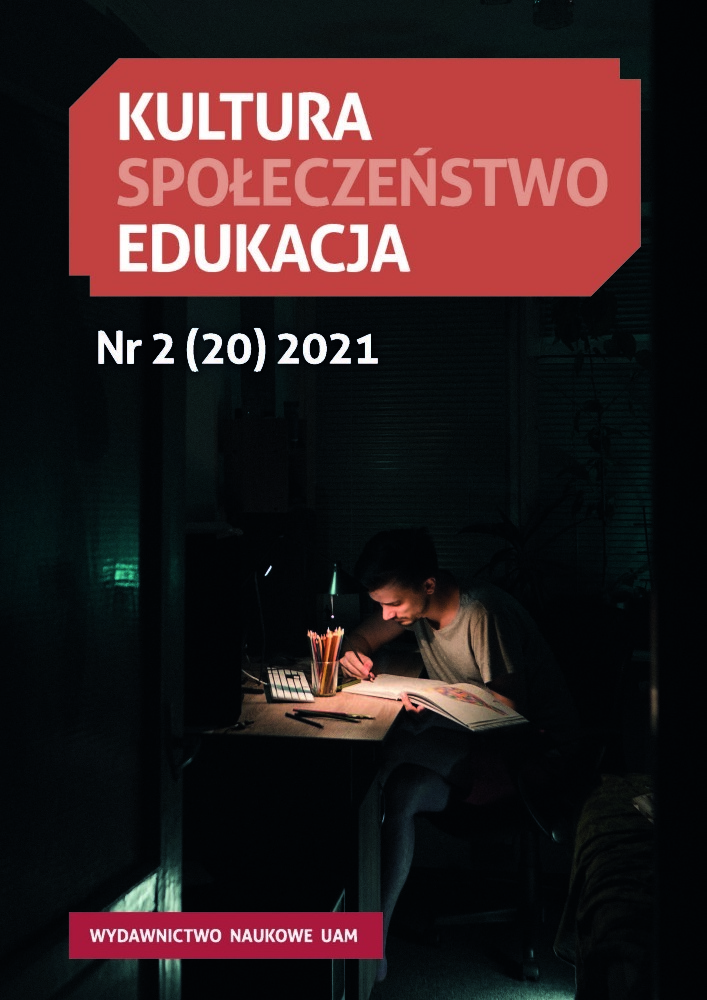Abstrakt
Indirect education found and is still finding its source in various media for a long time. Technological advancement results in the educators having an increased ability to use new tools in education. The goal remains the same but the social conditions impose a new identity – the subject teacher evolves into a media one. In the school system, necessary corrections have been introduced to the most important documents and the curricula, but there is still a lack of knowledge on what media education looks like in practice in specific national realities. The review article shows how goals determined by the curricula are already realized through new media in Poland and for which goals the didactic activities should be expanded. In the thematic block concerning physical activity, there is an entry: “The contents of this area have been enriched with modern forms of movement, physical activities from other European countries and use of modern technologies to monitor and plan physical activity” (MEN, 2017: 191). When organizing activities in the classroom area and with the right equipment, conducting lessons with the use of the media is not a problematic task. But are the PE teachers in a similarly comfortable position? It turns out that the development of information technology is conducive to the achievement of the objectives of this subject as well. The literature review and the solutions used so far in the school system are the basis for the thesis of a correlation between the ways in which modern media are used and the formation of the students’ attitudes towards physical culture.
Bibliografia
Bronikowski M. (2012), Dydaktyka wychowania fizycznego, fizjoterapii i sportu, Poznań.
Bronikowski M. (2015), Kilka słów o nowoczesnych metodach dydaktycznych w wychowaniu fizycznym, [w:] M. Bronikowski (red.), Wychowanie fizyczne a nowoczesne technologie, Poznań, s. 9–14.
Brownell K.D., Stunkard A.J., Albaum J.M. (1980), Evaluation and Modification of Exercise Patterns in the Natural Environment, American Journal of Psychiatry, 137(12), s. 1540–1545.
Carvalho De Araújo A., Knijnik J., Ovens A.P. (2020), How Does Physical Education and Health Respond to the Growing Influence in Media and Digital Technologies? An Analysis of Curriculum in Brazil, Australia and New Zealand, Journal of Curriculum Studies, 52(1), s. 1–16, DOI: https://doi.org/10.1080/00220272.2020.1734664.
Erdem C., Erişti B. (2018), Paving the Way for Media Literacy Instruction in Preservice Teacher Education: Prospective Teachers’ Levels of Media Literacy Skills, International Journal of Instruction, 11(4), s. 795–810.
EU Guidelines on Physical Activity (2008), Wytyczne UE dotyczące aktywności fizycznej. Zalecane działania polityczne wspierające aktywność fizyczną wpływającą pozytywnie na zdrowie. Czwarty projekt skonsolidowany, zatwierdzony przez Grupę Roboczą UE „Sport i Zdrowie”, Bruksela, https://d1dmfej9n5lgmh.cloudfront.net/msport/files/Downloads/20130103151557/Wytyczne_UE_dotyczace_aktywnosci_fizycznej.pdf?1357226160, dostęp: 02.10.2019.
Jolls T. (2015), The New Curricula: How Media Literacy Education Transforms Teaching and Learning, Journal of Media Literacy Education, 7(1), s. 65–71.
Kron F.W., Sofos A. (2008), Dydaktyka mediów, Gdańsk.
Kuźbik P. (2014), Odpowiedzialność społeczna w sporcie, [w:] Z. Pisz, M. Rojek-Nowosielska (red.), Społeczna odpowiedzialność organizacji: diagnoza i doskonalenie, Wrocław, s. 130–140.
MEN (2017), Rozporządzenie Ministra Edukacji Narodowej z dnia 14 lutego 2017 r. w sprawie podstawy programowej wychowania przedszkolnego oraz podstawy programowej kształcenia ogólnego dla szkoły podstawowej, w tym dla uczniów z niepełnosprawnością intelektualną w stopniu umiarkowanym lub znacznym, kształcenia ogólnego dla branżowej szkoły I stopnia, kształcenia ogólnego dla szkoły specjalnej przysposabiającej do pracy oraz kształcenia ogólnego dla szkoły policealnej, DzU z 2017 r. poz. 356.
Newton R.L. Jr., Marker A.M., Allen H.R., Machtmes R., Han H., Johnson W.D., Schuna J.M. Jr., Broyles S.T., Tudor-Locke C., Church T.S. (2014), Parent-Targeted Mobile Phone Intervention to Increase Physical Activity in Sedentary Children: Randomized Pilot Trial, JMIR mHealth and uHealth, 2(4), s. e48.
Pawłucki A. (1996), Pedagogika wartości ciała, Gdańsk.
Rodríguez-Hoyos C., Fueyo Gutiérrez A. (2018), Media Training for Future Education Professionals: A Study of the Spanish Context, Digital Education Review, 33, s. 217–234.
Sas-Nowosielski K. (2014), W jaki sposób promować aktywność fizyczną wśród młodzieży? NCBKF, s. 11–15.
Scull T.M., Kupersmidt J.B., Weatherholt T.N. (2017), The Effectiveness of Online, Family-Based Media Literacy Education for Substance Abuse Prevention in Elementary School Children: Study of the Media Detective Family Program, Journal of Community Psychology, 45(6), s. 796–809.
Tulodziecki G. (1997), Medien in Erziehung und Bildung. Grundlagen und Beispiele einer handlungs – und entwicklungsorientierten Medienpädagogik, Bad Heilbrunn/Obb.: Klinkhardt, s. 45.
Znaniecki F. (1973), Socjologia wychowania, Warszawa.
Licencja
Prawa autorskie (c) 2021 Magdalena Lubońska

Utwór dostępny jest na licencji Creative Commons Uznanie autorstwa – Bez utworów zależnych 4.0 Międzynarodowe.

